Do you know that we spend one-third of our lives sleeping? Yes, it’s true! And a comfortable bed is essential for a good night’s sleep. However, among the different types of beds on the market, you need to know how to select a bed that suits your needs. With a variety of beds available in the market, selecting the right one can be a daunting task.
But fret not, as we have got you covered with our ultimate guide to different types of beds. This article will provide you with information about common types of beds, sizes, benefits, and disadvantages. So, whether you are planning to upgrade your bed or buying a new one, this guide will provide you with everything you need to know about different types of beds.
So, let's dive into the world of comfortable and cozy beds and make your sleeping experience a dream come true.
Importance of Choosing the Right Types of Bed
Every night, we are guests in our beds, and these valuable pieces of furniture provide us with many benefits, even if we don't realize them. An uncomfortable bed may help us understand this better.
The first requirement for a good night's sleep is an ideal bed. To have an ideal bed, knowing the different types of beds is necessary. So let's get started.
What are the Main Types of Beds?
Each bed has a different name based on its dimensions and function. The most common ones are listed below.
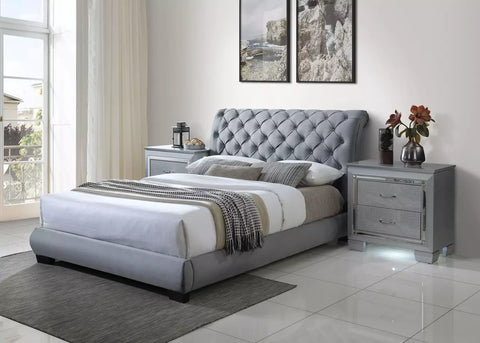
1. Queen Bed
Queen beds are the most common type of bed. They typically come in 60" x 80" dimensions. It is most common for couples since they are large enough to accommodate two average-sized adults comfortably. Up to six feet, two inches (187 cm) tall individuals can sleep comfortably on them. A king bed may be a better option for taller individuals.
Advantages:
- Queen beds are easy to fit into bedrooms.
- Since queen beds are the most popular type of bed, different types of bed sheets that fit them are easy to find.
- Due to their mass production and size, queen beds tend to be more affordable than king beds.
Disadvantages:
- There may not be enough room for two people because it is not wide enough.
- Queen beds are compact but difficult to move or transport to another room or inside the room.
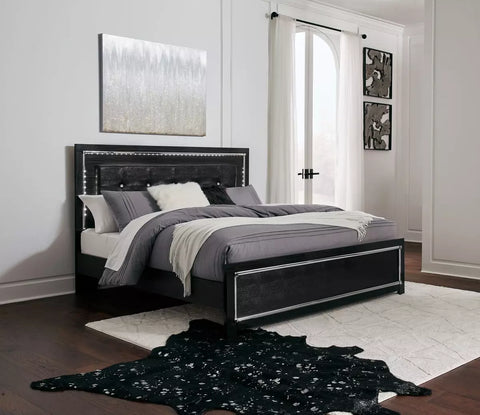
2. King Bed
King beds are approximately 16 inches wider than queen beds but the same length. They provide ample space for two people to sleep comfortably, with dimensions of 72" x 80". The types of king beds can accommodate individuals up to 6 feet 4 inches tall.
Advantages:
- With their spacious design, king-size beds provide a comfortable sleeping environment.
- They are ideal for two people sleeping together.
- Wide beds help align the spine, which improves sleep quality.
- Compared to queen beds, king beds are 35% wider and give your bedroom a more luxurious appearance due to their rich appearance.
Disadvantages:
- Due to their large size, king beds may be inconvenient to use in small bedrooms.
- King beds can be expensive and are also quite heavy, making them difficult to move around.
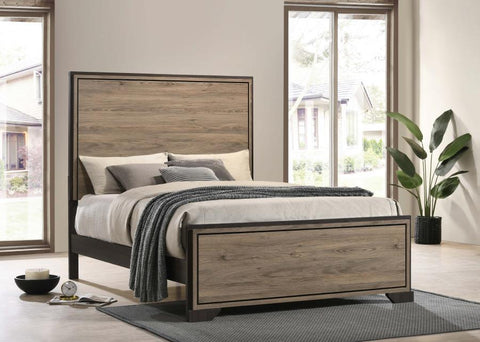
3. California King
California king beds measure 72" wide and 84" long, ideal for accommodating taller individuals.
Advantages:
- The California King bed is ideal for tall people due to its length.
- They provide a luxurious look in spacious rooms.
- California King beds have a wide variety of bedding options, including sheets, comforters, and duvet covers.
Disadvantages:
- Especially in small bedrooms, they eat up a lot of space and reduce the amount of usable space.
- It is more expensive to purchase a California King bed than a King or Queen bed, as they are less common.
- Due to their weight, they are difficult to move and transport within the home.
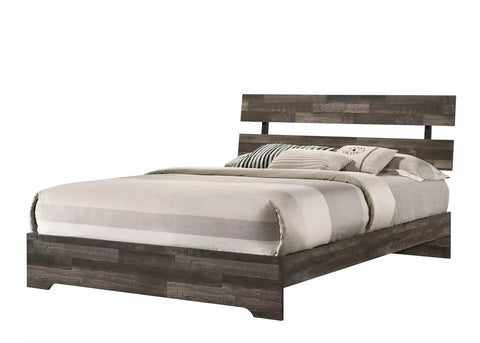
4. Full (Double) Bed
Full beds are slightly smaller than queen beds. The beds offer comfortable sleep for one person but can be used by two people if needed. These beds typically come in widths of 54" and lengths of 75". They are appropriate for guest rooms.
Advantages:
- Their compact structure makes them easy to place.
- They are lightweight and easy to move.
Disadvantages:
- The bed is barely enough for two people.
- Due to their small size, they do not provide a luxurious look.
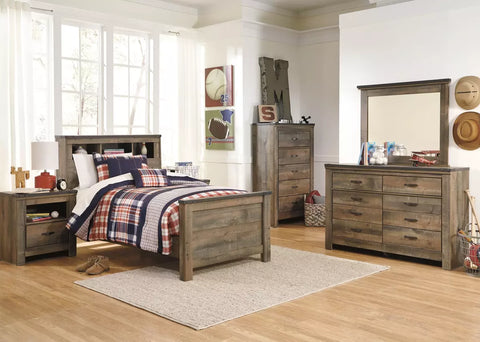
5. Youth Bed
An average youth bed measures 30 to 33" wide by 75" long. In general, they are a little bit wider than toddler beds, but they are normally around 25 inches longer than them. Compared to toddler beds, youth beds have fewer eye-catching figures and are simpler in design.
Advantages:
- The youth bed is an excellent choice for guest rooms.
- They are easy to move around due to their lightweight.
- The beds come with affordable price options as they cater to younger audiences.
Disadvantages:
- There is no room for two people to sleep in them.
- The design of some youth beds may make them unsuitable for guest rooms.
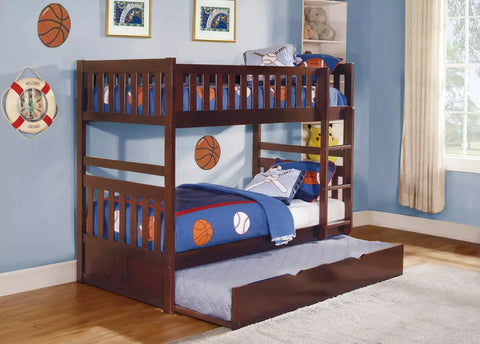
6. Twin and Twin XL
A twin bed is a set of beds designed to accommodate two young individuals or children at the same time. These beds offer separate sleeping spaces yet remain close to one another.
Advantages:
- You can accommodate your guests' children in the kid's room.
- As they are wider, they provide a more comfortable sleeping experience than youth beds.
Disadvantages:
- They usually have simpler designs.
- In the second bed, the mattress may not be thick enough and may not be comfortable enough to sleep on.
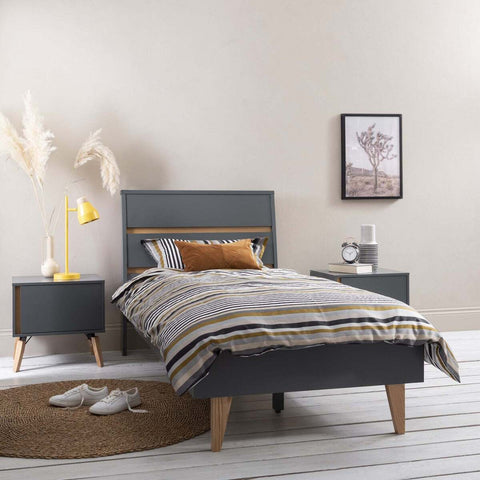
7. Single Bed
As the name suggests, single beds are designed for one person to sleep in. They are typically 38" x 75" and suitable for guests and adolescents.
Advantages:
- It is easy to find them, and they are affordable.
- Their lightweight and compact structure allows them to be easily transported.
- As they are standard, it is easy to find a suitable mattress for them.
Disadvantages:
- They generally have simple designs.
- Two people cannot sleep in them.
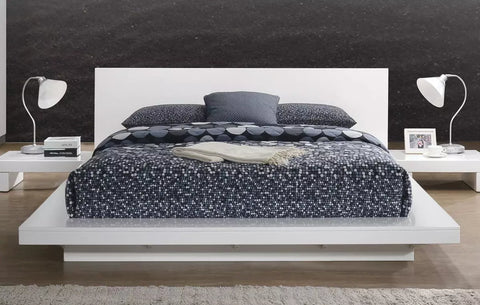
8. Floating Bed
These low-rise beds are a perfect example of the integration of form and function. As the bed frame is hidden, it creates the illusion that the bed is floating. Depending on your preference, these beds are available in California King, King, or Queen types of bed sizes.
Advantages:
- They have a modern look that adds elegance to bedrooms.
- As there are no different types of bed frames for the bed other than the base, they take up less space.
- They are easy to clean.
Disadvantages:
- As floaters are low in height, taller people may not find them comfortable.
- They are more expensive than other beds.
What are the Different Types of Beds?
Each type of bed is produced for a specific style and purpose. Now, let's look at these beds.

1. Day Bed
The daybed serves both as a sofa and a bed. These features save space, especially in small homes or rooms. In addition, daybeds are generally designed like a sofa, making them an excellent option for hosting guests or when you need an additional sleeping area.
Advantages:
- They save space due to their dual function.
- Designed for sleeping, they are comfortable and cozy. In addition, some models may come with pillow and cushion features that provide extra comfort.
Disadvantages:
- Although they can fulfill the function of a bed, they are not as comfortable as a regular bed.
- They are slightly more expensive than similar sofas.
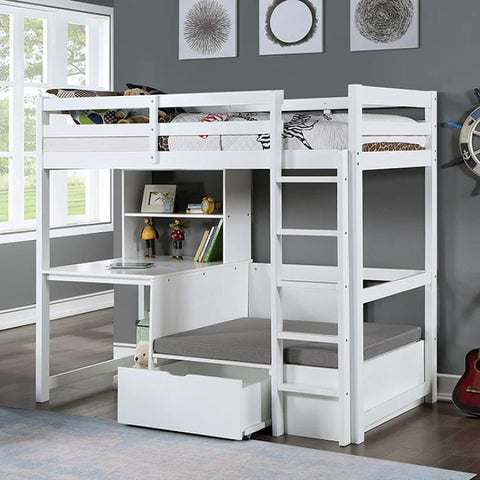
2. Bunk Bed
A bunk bed is an ideal space-saving solution for children's rooms. They are usually made of wood and have drawers or shelves. Bunk beds are also fun for kids.
Advantages:
- There are a variety of bunk beds available in the desired model and type.
- In a single room, two kids can sleep comfortably.
Disadvantages:
- Bunk beds can be dangerous when the top bunk is not protected.
- They are heavy and difficult to transport.
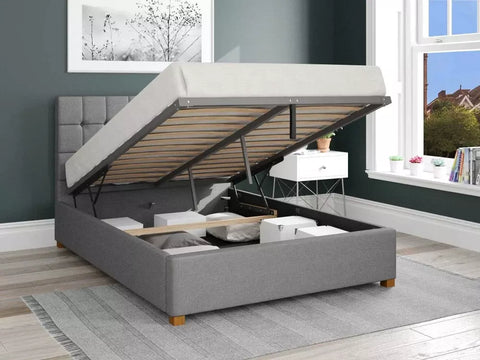
3. Ottoman Storage Bed
In Ottoman beds, the mattress is lifted by a spring-loaded mechanism, providing storage space underneath the mattress. As a result, Ottoman beds make sense for homes without adequate storage or limited storage space.
Advantages:
- They can come in any size and shape.
- They are ideal for storing bedding and extra pillows.
Disadvantages:
- Installation may be more difficult than other types of beds.
- Cleaning can be challenging due to the storage area's weight.
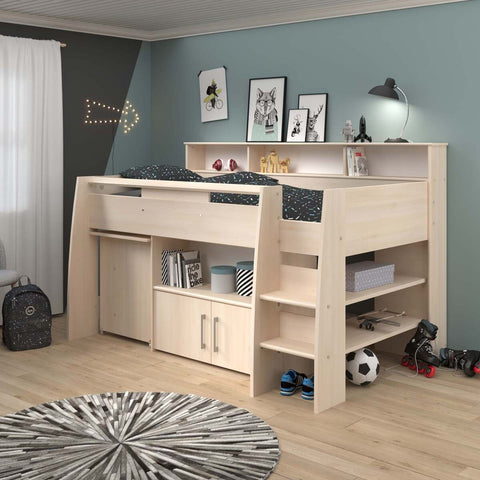
4. Mid Sleeper Beds
Mid-sleeper beds are single beds designed in bunk bed style. The beds also have many shelves and drawers to store children's toys. However, due to their height, these beds can be dangerous for children under five.
Advantages:
- The bed has a stylish design that children will enjoy.
- With extra drawers and storage spaces, it also serves as an effective organizer.
Disadvantages:
- It is not recommended for children under 5 years old.
- The bed can prevent the child from going to the bathroom at night.
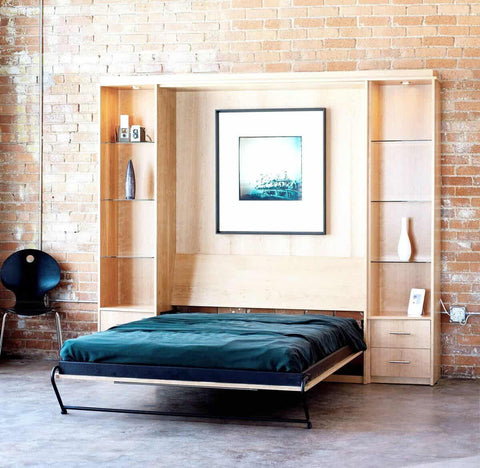
5. Murphy Bed (Wall Bed)
Typically, Murphy beds are wall mounted or mounted on a console in a living room and fold up when not in use. For maximizing space, they are an excellent choice. Murphy beds are popular in small apartments, guest rooms, and home offices where space is at a premium.
Advantages:
- They provide a practical solution for limited spaces.
- Their clever designs are sure to please everyone.
Disadvantages:
- Installation of some bed models can be difficult and require an expert.
- They require a large wall or console to mount on.
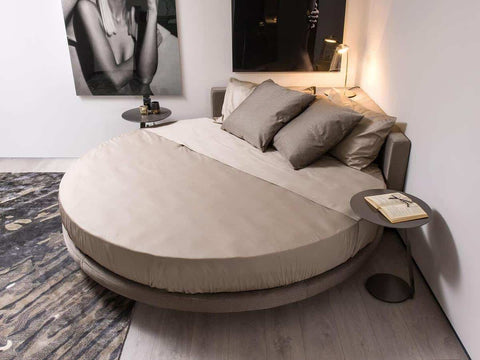
6. Round Bed
A round bed has an elegant appearance that resembles a water droplet.
Advantages:
- Their compact design gives them a stylish and modern appearance.
Disadvantages:
- Their round shape requires large space to accommodate them.
- Due to their low production volume, finding a suitable mattress can be challenging.
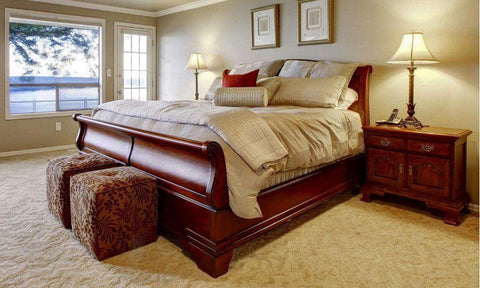
7. Traditional Bed
Usually made of walnut or cherry, these beds are very sturdy. The elegant details of classic lines can be displayed in your bedroom with these beds, which bring the old fashion to your home.
Advantages:
- They are made from hard woods, which makes them durable and long-lasting.
- They are comfortable and cozy beds.
- They have a classic and elegant look.
Disadvantages:
- The bed weighs a lot and is difficult to move or transport.
- To complete the look, other items in the room should also be of a classic style.
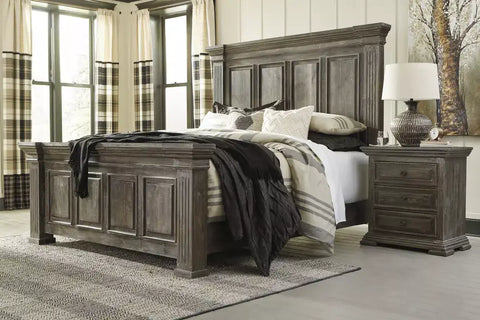
8. Rustic Bed
Rustic beds stand out with their simple designs and natural wood textures. Wooden beds are also one of the most popular options to complete a rustic decor. They provide natural warmth and comfort.
Advantages:
- You can create the feeling of being in a rural bedroom with them.
- The beds are perfect for mountain houses, country houses, or other natural settings.
Disadvantages:
- Because rustic beds are made of natural wood and undergo several processes, their prices can be high.
- Different types of bed bugs may damage them because of their natural structure.
When choosing a bed, always look for furniture store that offer a wide range of options and provide quality products. A low-quality bed purchased from an unreliable store can harm your budget and health.













































































 STAY CONNECTED WITH OUR EMAIL UPDATES
STAY CONNECTED WITH OUR EMAIL UPDATES